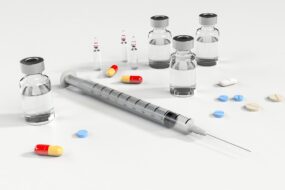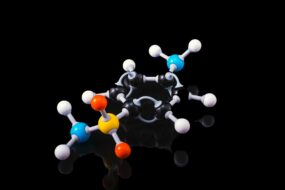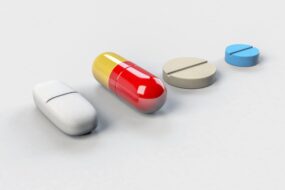Metoclopramide is a substituted benzamide.
It is chemically related to procainamide but has no pharmacological similarity to it.
It is mainly used as an antiemetic and prokinetic agent in the G I T.
Mechanism of action.
- High doses block dopamine and serotonin receptors in the chemoreceptor trigger zone of the CNS.
- This leads to increased sensitization of tissues to acetylcholine,
- upper GI motility without secretions, and lower esophageal sphincter tone.
Clinical uses.
- Antiemetic: Used in different types of vomiting, including; postoperative, drug-induced, a disease associated(especially migraine), radiation sickness, but is less effective in motion sickness.
- Dyspepsia and other functional g.i.t disorders, including persistent hiccups.
- Gastroesophageal reflux disease (GERD): the drug does not require aid in the healing of esophagitis but may be used as an adjuvant to acid suppression.
- Gastrokinetic: To accelerate gastric emptying:
(a) When emergency general anesthesia has to be administered, and the patient has taken food less than 4 hours before.
(b) To relieve postvagotomy or diabetic gastroparesis associated gastric stasis.
(c) To facilitate duodenal intubation.
Drug interaction.
- The bioavailability of cimetidine is also reduced.
- Abolishes the therapeutic effect of levodopa by blocking dopamine receptors in basal ganglia.
- It hastens the absorption of drugs, e.g., aspirin and diazepam, by facilitating gastric emptying.
- The extent of absorption of digoxin is reduced.
Adverse effects.
- Peri-orbital edema, skin rash, and galactorrhea.
- Sedation, dizziness, loose stools, muscle dystonias
- Long-term use can cause parkinsonism and gynecomastia.
Contraindication.
- Phaeochromocytoma: may cause a hypertensive crisis.
- Epilepsy
- The drug should not be used to augment lactation. The amount secreted in milk is small, but suckling infants may develop loose motions, dystonia, and myoclonus.
Dosage.
- 10 mg (children 0.2–0.5 mg/kg) TDS oral or i.m.
- For CINV 0.3–2 mg/kg slow i.v./i.m.
- PERINORM, MAXERON, REGLAN, SIGMET, 10 mg tablets; 5mg/5 ml syrup; 10 mg/2 ml inj.; 50 mg/10 ml injection.












